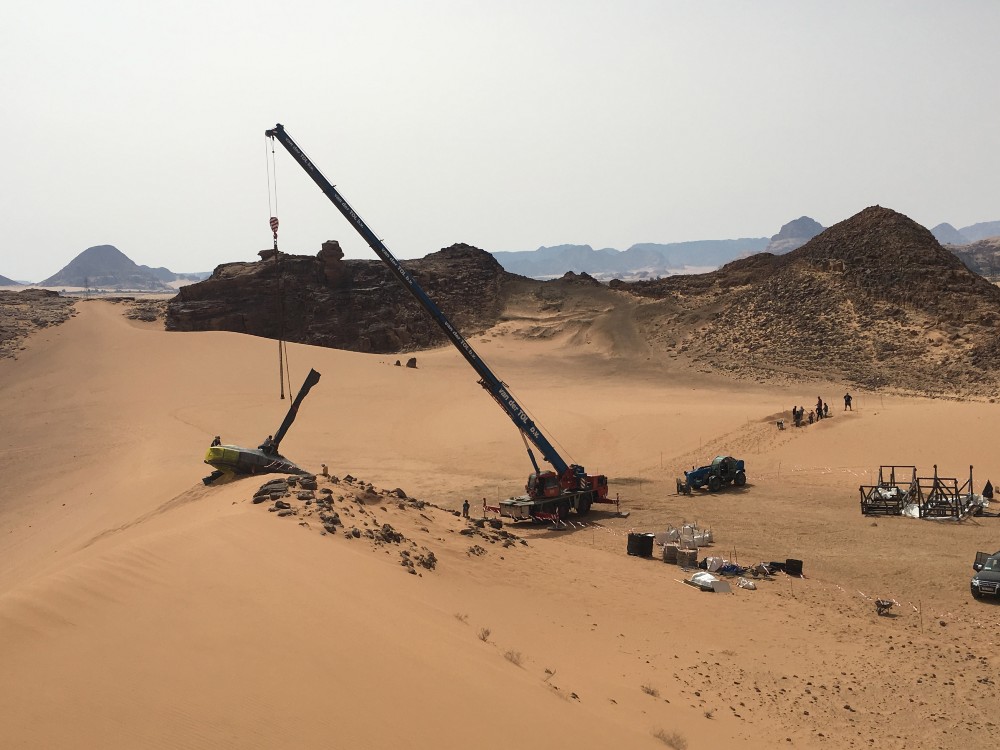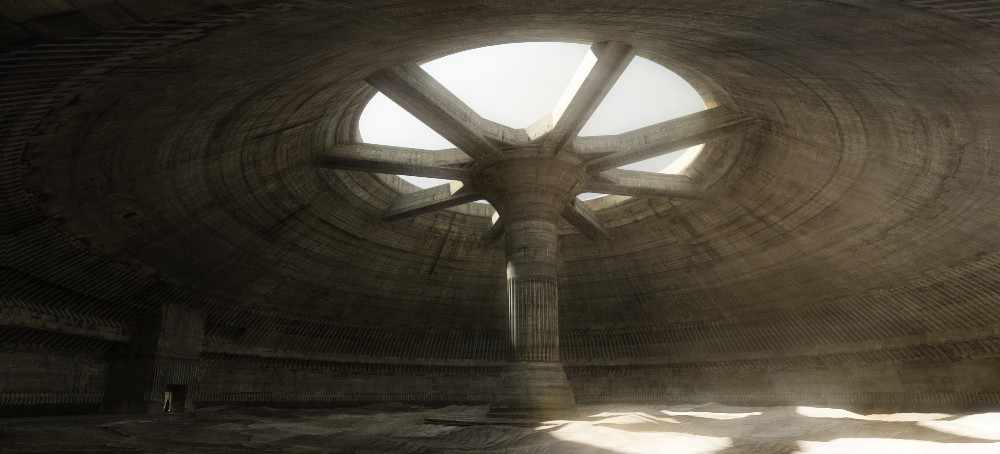
When Production Designer Patrice Vermette of Montreal, Canada undertook the task of bringing the world of Frank Herbert’s 1965 novel Dune to life in three dimensions, he knew the challenge was monumental. Not only were there legions of fans of the original book, there had also been a 1984 film adaptation which was, in some manners, a modern classic.
Alas, the foremost hurdle in Vermette’s list of obstacles to overcome was pleasing his director, Denis Villeneuve. “I knew how important that book was for him, because he read it when he was 13, 14-years-old,” said Vermette of the director’s attachment to the novel. “He’s been dreaming of that project, so I went back to the original material. I read the book again before reading the script because I wanted to make sure that I had a complete comprehension of the book.”
In early talks with Villeneuve, Vermette considered what visual details from the script he could bring to the surface to support the story. “I started doing my little scribbles myself, and once we had a certain comprehension of where we were heading, some mood boards were created,” Vermette, who had worked with Villeneuve on Arrival, explained. “Then, I started with my team in February, 2018. It happened quite fast—a couple of weeks. I wanted to make sure that what we created in the beginning is solid ground for the rest of it—to expand from.”
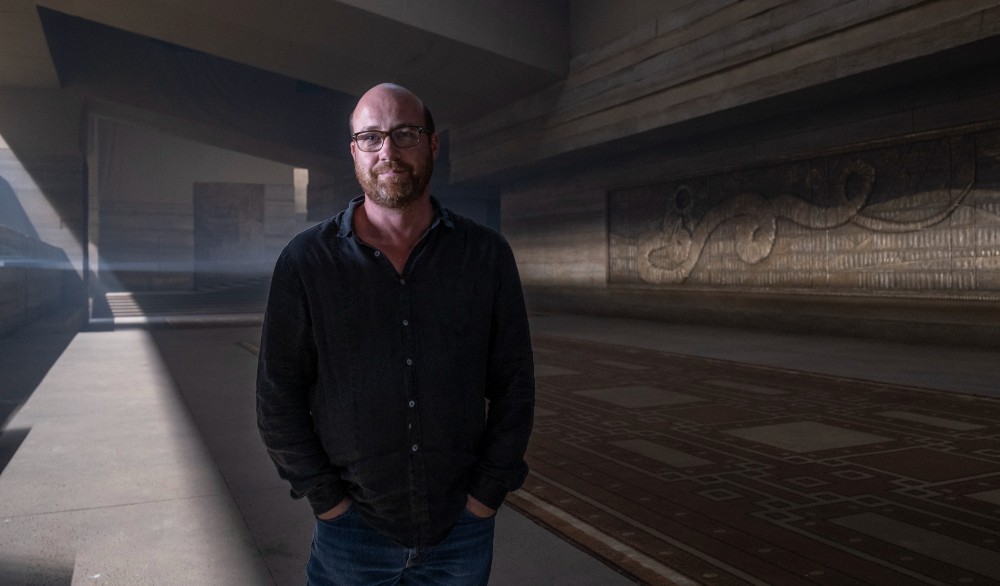
Beginning the project with a small core team, including concept artists Deak Ferrand and George Hall, Vermette knew that the sheer size of the project would mandate an eventually massive art department. “The amount of stuff that needed to be done, the team was bigger on this one, but it starts small,” Vermette said. “We’re two or three—Aaron Morrison [Dune graphic designer] came in the early, early stage. Deak, Aaron always like to bounce ideas. And then Peter Popken [concept artist] showed up. I still keep it quite tight for a long time.”
By the time Dune entered pre-production, Vermette had compiled a book of over 125 images from which Villeneuve could choose, plus computer-generated models. “We draw on a computer with software, whether it’s Cinema 4D, SketchUp, and we all use Maya,” Vermette detailed. “We all draw from models because it gives us the opportunity to have multiple angles, and, from those angles, and it’s more sculptural, as well as an approach. From those illustrations—the bible, we called it—came for the need to be super precise. The illustrations became the foundation of the show [that] told the whole team where we were heading.”
Working with the cinematography and visual effects departments, Vermette was integrally involved in producing a storyboard which added camera angles to the digitally-rendered models to ensure how light fell across them. “We’re supporting Denis’ vision,” Vermette divulged. “The storyboards set the ground of what we’re doing—these images were everywhere in our department and in the production building.”
Throughout pre-production, Vermette’s art department built interior sets on five separate soundstages in Origo Studio in Budapest, Hungary, plus exteriors in one major Hungarian backlot and two smaller backlots. Sets were also constructed on top of a nearby mountain. Properties, including spacecraft, were built in London and shipped by cargo planes to Jordan where they were reassembled for exterior location photography. In many cases, giant cranes were utilized to position special Dune elements in Jordan. The main unit arrived toward the end of September of 2018 and began shooting on the first of March, 2019.
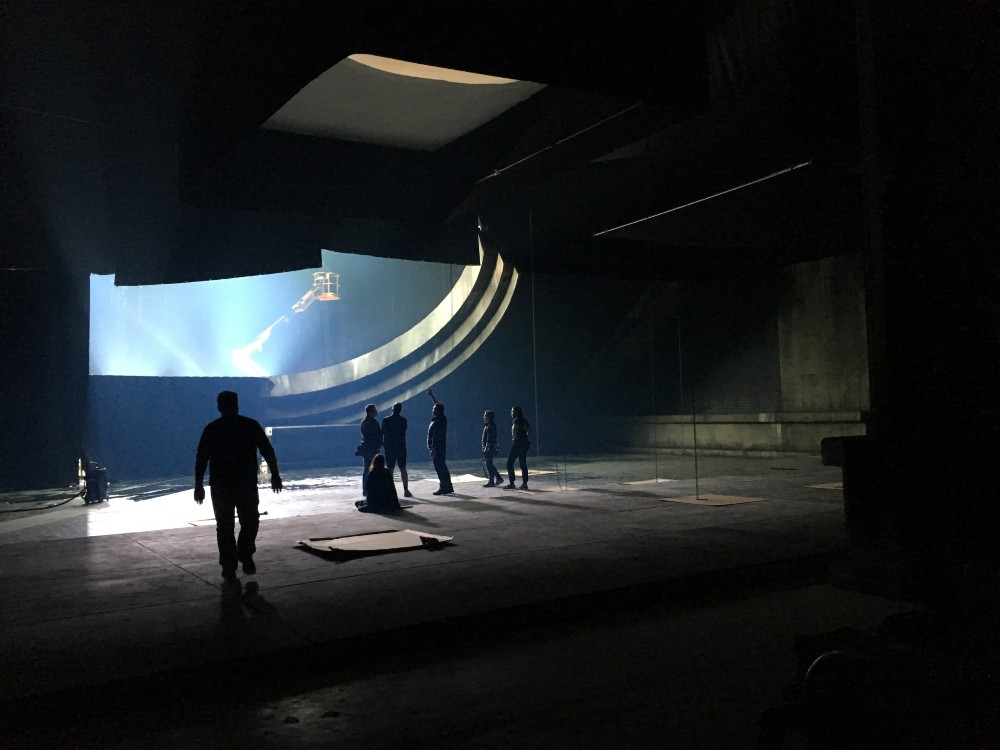
After wrapping soundstage and backlot-based principal photography in Budapest, the company moved to Jordan to shoot everything that dealt with rock formations. The main unit then relocated to Abu Dhabi for shots which required open desert landscapes, before finishing production on the northwest coast of Norway, where the martini shot took place at sunset — 11:30 at night.
Working in Hungary, Vermette found highly-skilled craftspeople who comprised his department. “I cannot say too much how the craftsmanship of the Hungarian crew was amazing,” said Vermette, adding that his team built all of Dune’s sets without the incorporation of green screen. “Denis always wants immersive sets as much as possible. We built all the way still up to 24, sometimes 30-feet-high. The rest of it was covered with fabric the average color of the set, that would continue the volumes of the set that I had on the original model and concept art.”
In conceiving a fully dimensional set, Vermette collaborated with Cinematographer Greig Fraser in shooting the practical environments which would populate Dune. “Greig would put his light where, in real life, light would actually come in,” Vermette revealed. “The light would bounce on the same color wall—that fabric would be the same, the average color, which was a shade of sand color. And it would light the actors and the rest of the set with no contamination from green. That also would be helping visual effects to know exactly where the solid volumes in the space would be, and they would clad that fabric with the real texture. This came from the genius minds of [Visual Effects Supervisor] Paul Lambert and Greig Fraser—we all like working together. We all put our heads together, and we made it happen.”
In Hungary, Vermette hired local artists to work in his art department, save a select few, including Set Decorator Richard Roberts, supervising art director Tom Brown, and paint supervisor Serge Archambault. “There were hundreds of people,” said Vermette. “All the art directors, like Gergely Rieger and Tibor Lázárall, were Hungarian. When we went to Jordan, Samy Keilani was my art director. Two greensmiths were men from England. It was important for me to hire local groups. I had my painters from Hungary come for a built element in the Jordanian desert because they had painted it, and I wanted the color to match for [the] one day reassembled in Jordan. That’s fun because I don’t believe in one way of making things—there’s multiple ways, and you learn from different techniques and different people. They [brought] the best of their game, and it only makes the project better.”
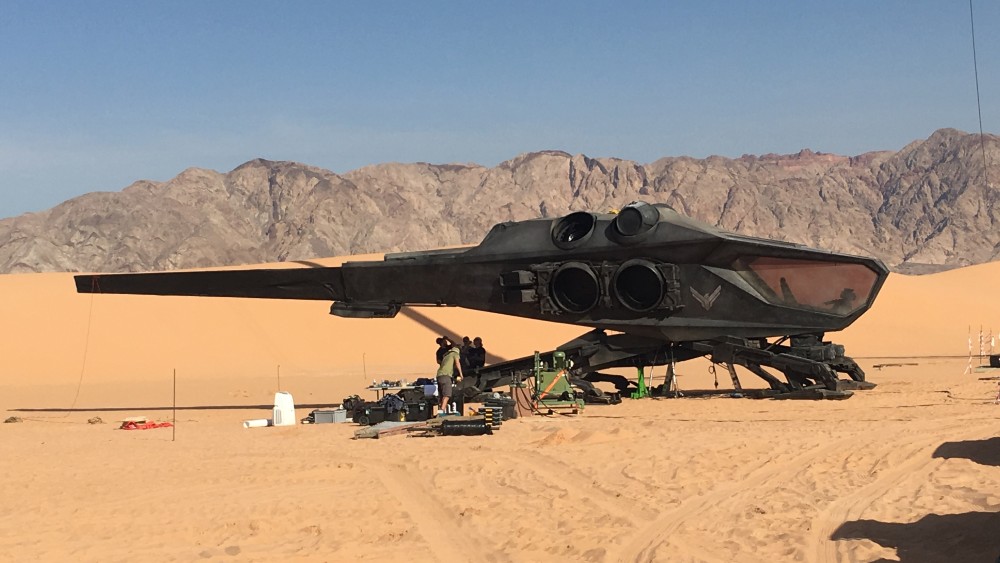
Production on Dune wrapped on the 5th of August of 2019, with some additional photography in Budapest occurring during July 2020. Upon completion of the project, Vermette deemed it one of his top accomplishments. “Every prop had to be designed, every set piece—whether it’s a bed, whether it’s a table—everything needed to be designed,” Vermette reflected. “There’s no ‘Dunes-Are-Us’ store. I know there are some things we’re doing for the set that will probably never end up in the movie, but we better have that just in case. It’s not like we could go to an antique store and rent—it just won’t happen; it just won’t be right. So if we need, say, this little table, there’s a little bench there—let’s make it.”
As Villeneuve and Vermette have known each other since the mid-1990s, starting in commercials together, Vermette conveyed that there is a shorthand between the two artists. “We’re brothers,” he said. “We have a similar family background; we have a similar taste in music, similar taste in contemporary art. What I like about him is that he encourages people to go outside the box. On any movie, I like to anchor things in a reality. I don’t like design for design. I like design when there is a reason for that design. His approach to every movie—it’s almost like it could be a documentary.”
On his films with Villeneuve, Vermette stated that his director pushes him to go even further into the details of any of a project’s critical visuals. “Denis basically unites a film,” Vermette relayed. “’In the end, the love you take is equal to the love you make.’ That’s exactly the relationship with Denis. He gives so much love to give it back—it’s the trust. It’s the right balance. It’s amazing. That would be the perfect description.”
Dune is still playing in theaters.
All photos courtesy and copyright Legendary and Warner Bros. Pictures.
